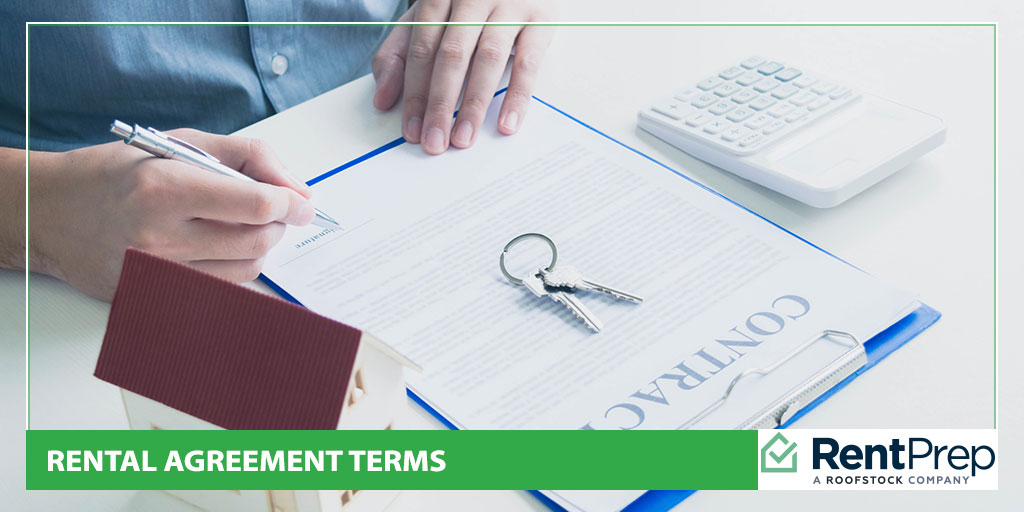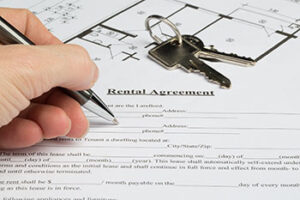
There are many important parts of the rental process. You have to find the right property, the right tenants, and the right business process to create your own success. What aspect of your business influences all of these things?
The right rental agreement can make a huge difference in how well your business runs. The rental agreement terms determine the relationship that you and your tenants share with the property, and that makes the agreement essential.
Do you know what to include in a rental agreement to ensure it does everything that it should? If you leave out any essential clauses, you may be leaving yourself open to huge losses and damages that could have been prevented.
Today, you will have a chance to learn more about terms that you should be including with your rental agreement. With this info, you can better protect your business and your properties as you move forward.
A Table Of Contents About Rental Agreement Terms
- What Is A Rental Agreement?
- Why Rental Agreement Terms Matter
- What To Include In A Rental Agreement
- Rental Agreement Example FAQs
- Create Your Own Rental Agreement Template
What Is A Rental Agreement?

Before you learn about the specifics of what terms to include with your rental agreements, let’s cover what a rental agreement is more precisely.
A rental agreement is a legal document that sets up the structure for the relationship between you, your tenant, and your property. This document legally contracts both parties to ensure the property is used only in the agreed-upon ways. Should any disagreements arise, the document will help sort out differences or, if necessary, prove a party’s case in court.
Why Rental Agreement Terms Matter
Why is ensuring that the specifics of your rental agreement are as precise as possible so important?
It comes down to this: The more details you put into the contract, the better. More details mean that both you and the tenant will have a better idea of what the expectations, conditions, and terms of the property are.
Without enough details, a tenant could be doing something that causes damages to the property without even realizing it. Without enough details, the tenant might not know how or when to contact you about problems you need to resolve. Without enough details, proving any disagreement in court will be incredibly difficult.
That is why it is essential that you include the most important rental agreement terms in your agreement.
What To Include In A Rental Agreement
What are the terms that are so important and to make sure to include in your agreement? Let’s break down the most important clauses so you can understand what should be included and why it is necessary.
Basic Premise & Tenant Information
The most basic part of the agreement that needs to be included is the identifying information of both the property and the tenant:
- Address of the rental property
- Full names of each adult tenant living at the property
All adults who are living at the property should be signing the lease agreement to ensure they are equally responsible for following the terms of the agreement. All parties should review the terms of the agreement with the landlord to ensure all questions can be cleared up before signing.
Tenancy Length

There is no specific length of time that is required for tenancy, but the dates must be determined and notated in the agreement. Usually, tenancy begins on the first of the month, but the month can be prorated as needed if it does not.
The rental agreement can be written as a month-to-month agreement, or it can be written as a longer lease agreement. There are pros and cons to both short- and long-term tenancies; it is up to you as the landlord to determine what you will accept.
Occupancy Limits
Occupancy limits set the number of people who are permitted to live on your rental property. Generally speaking, landlords permit two renters per bedroom.
While you are permitted to set a limit on this number so long as your limit is compliant with all local laws, you need to pay attention to national mandates like the Fair Housing Act as well. Occupancy and subletting rules are often controlled by local laws, so consult with a local official or attorney about this term before setting your occupancy limits.
Rent Rules
Collecting rent is often one of the most stressful parts of being a landlord. For that reason and many more, you need to make sure that the the rental agreement clearly details the following:
- When is rent due?
- How can rent be paid?
- What is the rent amount?
The amount owed and date due must be clearly outlined. Nearly all rental agreements set rent to be due at the beginning of the month.
When explaining how rent can be paid, make sure you are specific and detailed about the acceptable payment methods. Explain exactly what services you accept, how they are used, and what other specifics the tenant needs to know.
It is also a good idea to notate in this section any late fees or bounced check fees that will apply, to ensure both parties are in agreement about and aware of the fees.
Deposits And Fees
If you are requiring a security deposit, the exact terms of how the deposit will work must be explained. Security deposits can be a serious disagreement point between tenants and landlords, so you want to be excessively clear.
Before writing up your deposit clause, research your local and state laws about security deposits and how they are to be handled in your area. Then, write your rules in a way that does not contradict any of the laws.
Explain the following in specifics:
- How much the security deposit is
- Where it will be held
- If interest will be paid on the deposit, as applicable by law
- What the deposit may be used for
- How the deposit will be returned after tenancy
Rules And Required Paperwork
The terms of the rental agreement should also cover the general house rules and behavior-related clauses for the property. Such things may include quiet hours, how noise is defined, and what will happen if the rules are broken.
Other information that you will want to give the tenants with these house rules includes:
- Emergency contact information
- Emergency exit plans and maps
- Local emergency personnel contact numbers
- Trash and recycling schedule and rules
- Utility company information (if applicable)
Maintenance And Responsibilities
Finally, rental term conditions should always include clear information about who is responsible for repairs and maintenance. You as a landlord have many responsibilities in this area, and your tenant should be made aware of who is responsible for what.
Any tenant responsibilities should be clearly outlined so that the tenant knows what they are expected to do for the property before they sign. Such responsibilities may include:
- Changing air filters
- Maintaining the lawn
- Preventing pest infestation with regular cleaning
- Maintaining the appliances by using them properly
- Returning the property in the same condition it was rented in
All maintenance responsibilities, as well as who will be responsible for paying for various types of repairs, should be included.
Finally, make sure to let tenants know what they are and are not allowed to do to the property in terms of hanging things, painting walls, and similar home alterations.
Rental Agreement Example FAQs
What Is The Purpose Of The Rental Or Lease Agreement?
The rental agreement or lease agreement that you and your tenants sign together is a legally binding contract that dictates the terms of your rental relationship. It acts as the guide for how each party should act and what each party should expect from the relationship. If the terms of the lease are broken, it acts as evidence in a court hearing.
What Are The Different Types Of Rental Agreements?
Generally, there are two types of agreements used by landlords: rental agreements and lease agreements.
What Is The Difference Between Rent Agreements and Lease Agreements?
There’s a strong chance that you have seen both the phrase “rental agreement” and “lease agreement” when talking about legal contracts between landlord and tenant. Which of these is the proper terminology?
Ultimately, both phrases are correct.
Though they are often used interchangeably, the two generally have different meanings.
Rental agreements are typically used for month-to-month agreements, while lease agreements are intended for long arrangements of 12 or more months. Ultimately, many of the terms included in both agreements are the same. The details of the terms and the time frame are what differ.
What Are The Most Common Clauses Added On To These Base Terms?
In addition to the rental terms already covered, these areas are often tacked on to base rental agreements to cover specific rental situations:
- Parking clause
- Common area usage clause
- Pet clause
These three areas are often included or relevant in rental situations, so they are the most common clauses that you will see tacked onto rental agreements as needed.
Create Your Own Rental Agreement Template
Now that you have a broader understanding of what to include in a rental agreement, you can craft your own template. Having a rental agreement example on hand that you can shape to suit each rental is a great time-saver. Here’s a basic rental agreement template that you can customize to fit your rental property.
Your process for signing off will be simple:
- Take the base agreement
- Adjust included clauses as needed
- Add dates of tenancy and tenant information
- Sign
Getting the right rental agreement in place is actually very simple once you have the base structure ready to go. Work to ensure your rental agreement is solid, and all of your future rental business will be incredibly improved.

